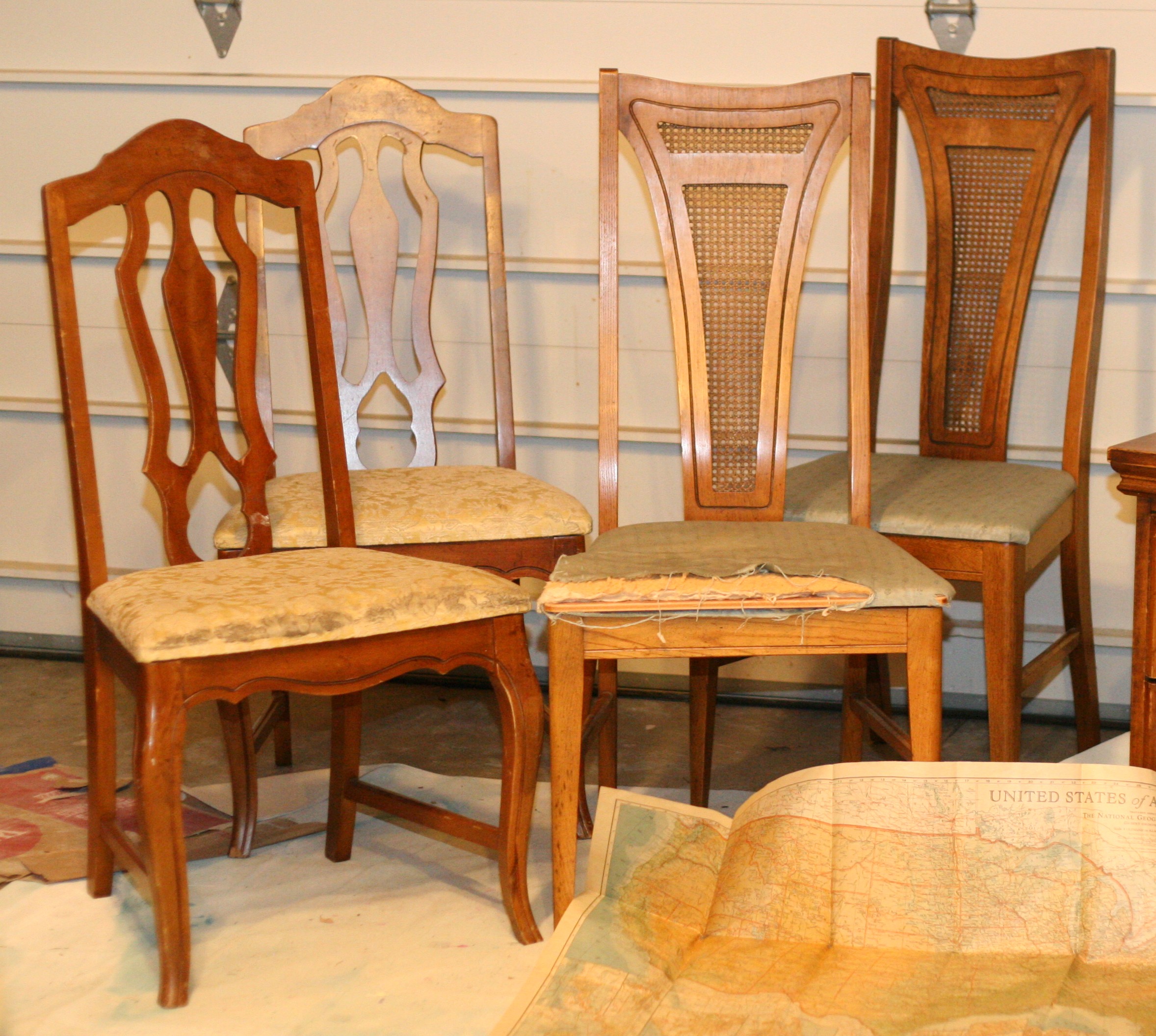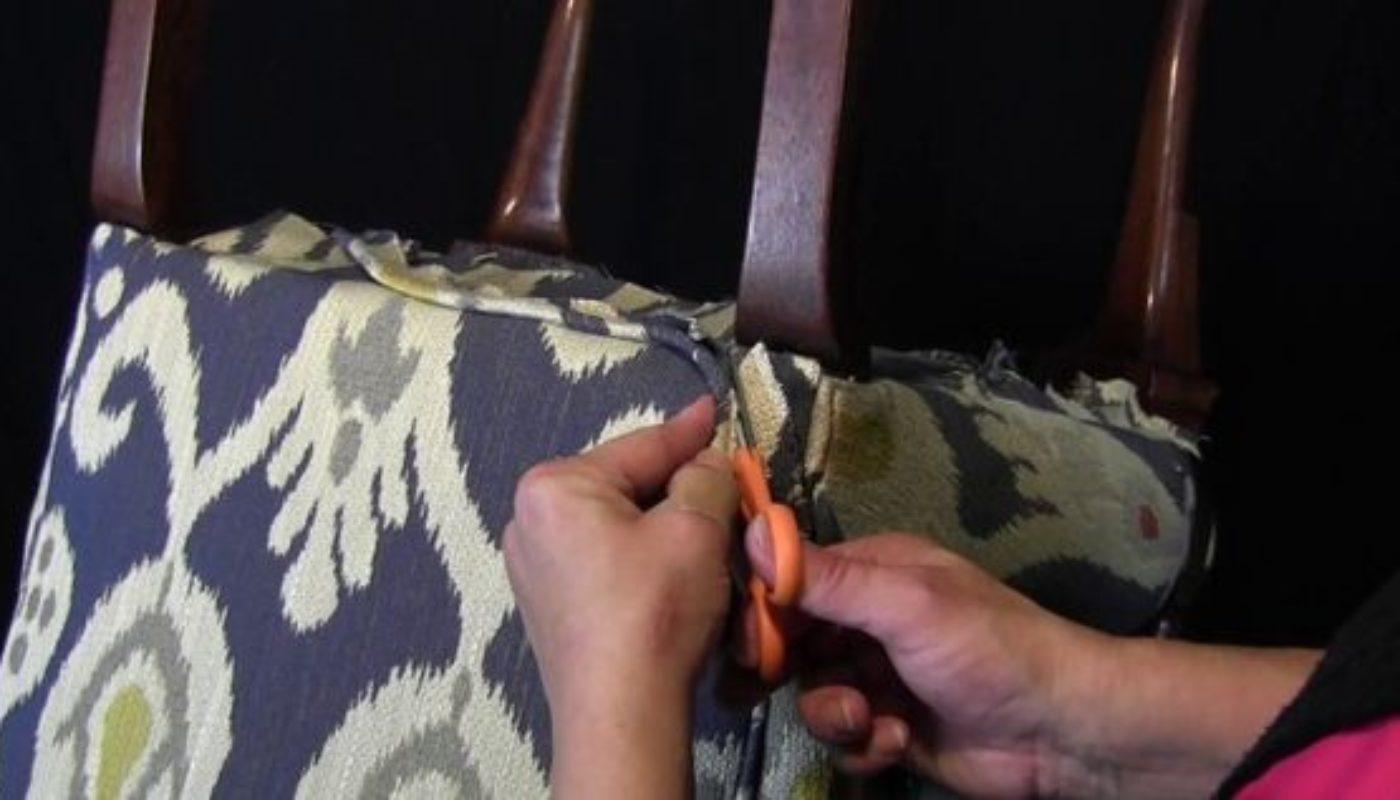Preparing for the Project

Before diving into the exciting world of painting and reupholstering your dining room chairs, it’s essential to prepare for the project. This involves gathering the necessary materials, carefully inspecting your chairs, and selecting the perfect paint and fabric.
Identifying the Materials
Having the right tools and materials on hand will ensure a smooth and successful project. Here’s a list of essentials you’ll need:
- Paint: Choose a high-quality paint specifically designed for furniture. Consider oil-based paint for a durable finish, or latex paint for a quicker drying time and easier cleanup.
- Paintbrushes: Invest in a variety of brushes, including a flat brush for larger areas, an angled brush for corners and edges, and a small detail brush for intricate details.
- Paint thinner: This is essential for cleaning brushes and removing any spills.
- Sandpaper: Use different grit levels, such as 120 grit for rough sanding and 220 grit for finishing.
- Primer: A primer helps the paint adhere better to the surface and creates a smoother finish.
- Fabric: Choose a durable fabric suitable for upholstery, such as cotton, linen, or velvet. Consider factors like texture, color, and pattern.
- Staple gun: This is essential for securing the fabric to the chair frame.
- Staples: Choose staples that are long enough to penetrate the fabric and the chair frame securely.
- Scissors: Sharp scissors are essential for cutting the fabric.
- Measuring tape: Use a measuring tape to accurately measure the fabric and chair dimensions.
- Screwdriver: A screwdriver will be useful for loosening and tightening screws.
- Safety glasses: Protect your eyes from dust and debris during sanding.
- Gloves: Protect your hands from paint and other materials.
- Drop cloths: Protect your work area from spills and paint splatters.
- Tack cloth: This is used to remove dust and debris before painting.
Assessing the Chairs
Before you begin painting and reupholstering, it’s crucial to assess the condition of your chairs. This involves identifying any damage, determining the type of fabric, and examining the wood.
- Inspect for damage: Look for any cracks, chips, loose joints, or worn-out fabric. This will help you determine the extent of the repairs needed.
- Determine fabric type: Examine the fabric on your chairs. Is it woven, knitted, or a blend? Understanding the fabric type will help you choose a suitable replacement fabric.
- Assess the wood: Check the condition of the wood. Is it sturdy and free of rot? Look for any signs of damage that need to be repaired before painting.
Choosing Paint and Fabric
Selecting the right paint and fabric is key to achieving a beautiful and long-lasting result. Consider the following factors:
- Style: What style are your dining room chairs? Choose paint and fabric that complement the existing décor and your personal style.
- Color: Choose a paint color that complements the room’s color scheme. For fabric, consider colors that are both stylish and practical.
- Durability: Choose a durable paint that can withstand everyday wear and tear. For fabric, select a material that is resistant to stains and fading.
Painting the Chairs: How To Paint And Reupholster Dining Room Chair

Before you start painting, it’s important to prepare the chairs for a smooth and durable finish. This involves stripping off old paint, sanding the wood, and priming the surface.
Preparing the Chairs for Painting
Stripping old paint is essential for a fresh, even coat of paint. There are several methods for stripping paint, including chemical strippers, heat guns, and sanding.
- Chemical strippers are effective for removing multiple layers of paint, but they can be harsh and require proper ventilation.
- Heat guns can be used to soften the paint, making it easier to scrape off. However, this method can damage the wood if not used carefully.
- Sanding is a more time-consuming method but is gentler on the wood. Use progressively finer grits of sandpaper to remove the old paint and smooth the surface.
After stripping the old paint, sand the wood to create a smooth surface for the primer and paint to adhere to. Start with a coarse grit sandpaper to remove any remaining paint or imperfections, then gradually progress to finer grits for a smoother finish.
Priming the chairs is crucial for creating a barrier between the wood and the paint. Primer helps the paint adhere better, prevents the wood from absorbing the paint, and creates a more even surface. Choose a primer that is compatible with the type of paint you will be using.
Applying Paint
There are various techniques for applying paint to the chairs, each with its own advantages.
- Using a brush is a traditional method that allows for precise control, especially in corners and crevices.
- A roller is ideal for covering large surfaces quickly and evenly.
- Spray painting is the fastest method, but it requires proper ventilation and a steady hand.
For a smooth and even finish, apply thin coats of paint, allowing each coat to dry completely before applying the next.
Always follow the manufacturer’s instructions for drying time and number of coats.
For a distressed look, use a dry brush technique or sand the paint lightly after it has dried. For a high-gloss finish, apply multiple coats of paint and finish with a clear coat of varnish.
Protecting the Paint, How to paint and reupholster dining room chair
Sealing the paint is important for protecting it from scratches, chips, and moisture. A clear coat of varnish or polyurethane will create a durable and protective layer over the paint.
- Choose a varnish or polyurethane that is compatible with the type of paint you used.
- Apply thin coats, allowing each coat to dry completely before applying the next.
- Follow the manufacturer’s instructions for drying time and number of coats.
Reupholstering the Chairs

Now that your chairs are prepped and painted, it’s time to give them a fresh new look with new upholstery. Reupholstering dining chairs can be a rewarding project, transforming their appearance and adding a personalized touch to your dining space.
Removing the Old Upholstery
Removing the old upholstery is the first step in reupholstering your chairs. This involves carefully taking apart the existing fabric, padding, and staples.
- Locate the staples: Begin by examining the underside of the chair seat and back. Look for staples that secure the fabric to the frame.
- Use a staple remover: Carefully pry the staples out using a staple remover. Work slowly and gently to avoid damaging the chair frame.
- Remove the fabric and padding: Once the staples are removed, you can carefully peel back the fabric and padding. You may need to use a pair of pliers to help pull out stubborn staples or tacks.
- Inspect the chair frame: Once the old upholstery is removed, inspect the chair frame for any loose or damaged parts. If necessary, reinforce or repair the frame before moving on to the next step.
Preparing the New Fabric
Before attaching the new fabric, it’s essential to measure and cut it properly to ensure a perfect fit.
- Measure the chair seat and back: Use a measuring tape to determine the exact dimensions of the chair seat and back. Add a few inches to each measurement to allow for seams and adjustments.
- Cut the fabric: Cut the fabric to the measured dimensions, leaving enough extra fabric for seams and to wrap around the edges of the chair frame.
- Prepare the fabric edges: Fold and sew the edges of the fabric to create a clean and finished look. You can use a sewing machine or hand-stitch the edges.
Attaching the New Upholstery
Once the fabric is prepared, you can attach it to the chair frame.
- Position the fabric: Carefully position the fabric over the chair seat and back, ensuring it’s centered and smooth.
- Secure the fabric: Use a staple gun to attach the fabric to the chair frame. Start by stapling the fabric in the center of each side, then work your way towards the corners.
- Maintain even tension: As you staple the fabric, ensure it’s pulled taut to create a smooth and even finish. Avoid overstretching the fabric, as this can lead to wrinkles.
- Tuck and staple the edges: Once the fabric is secured, tuck the edges neatly under the frame and staple them in place.
- Trim any excess fabric: After stapling the fabric, trim any excess fabric to create a clean and finished look.
How to paint and reupholster dining room chair – Giving your dining chairs a makeover is a fun way to refresh your space. Painting the frame adds a pop of color, and reupholstering the seats gives them a new lease on life. If you’re looking for a quick and easy update, consider gray dining chair slip covers – they’re a simple way to change the look without the commitment of full reupholstery.
Whether you go for a complete overhaul or a simple refresh, your dining chairs will be looking fabulous in no time!
Giving your dining room chairs a fresh look is totally doable! You can paint them a bold color or go for a natural wood finish, and then add some personality with a new fabric. If you’re looking for some inspo, the Target Camelot dining chair is a great example of a classic style that can be easily customized.
Once you’ve got your paint and fabric picked out, you’re ready to unleash your inner artist and give your chairs a whole new vibe!
